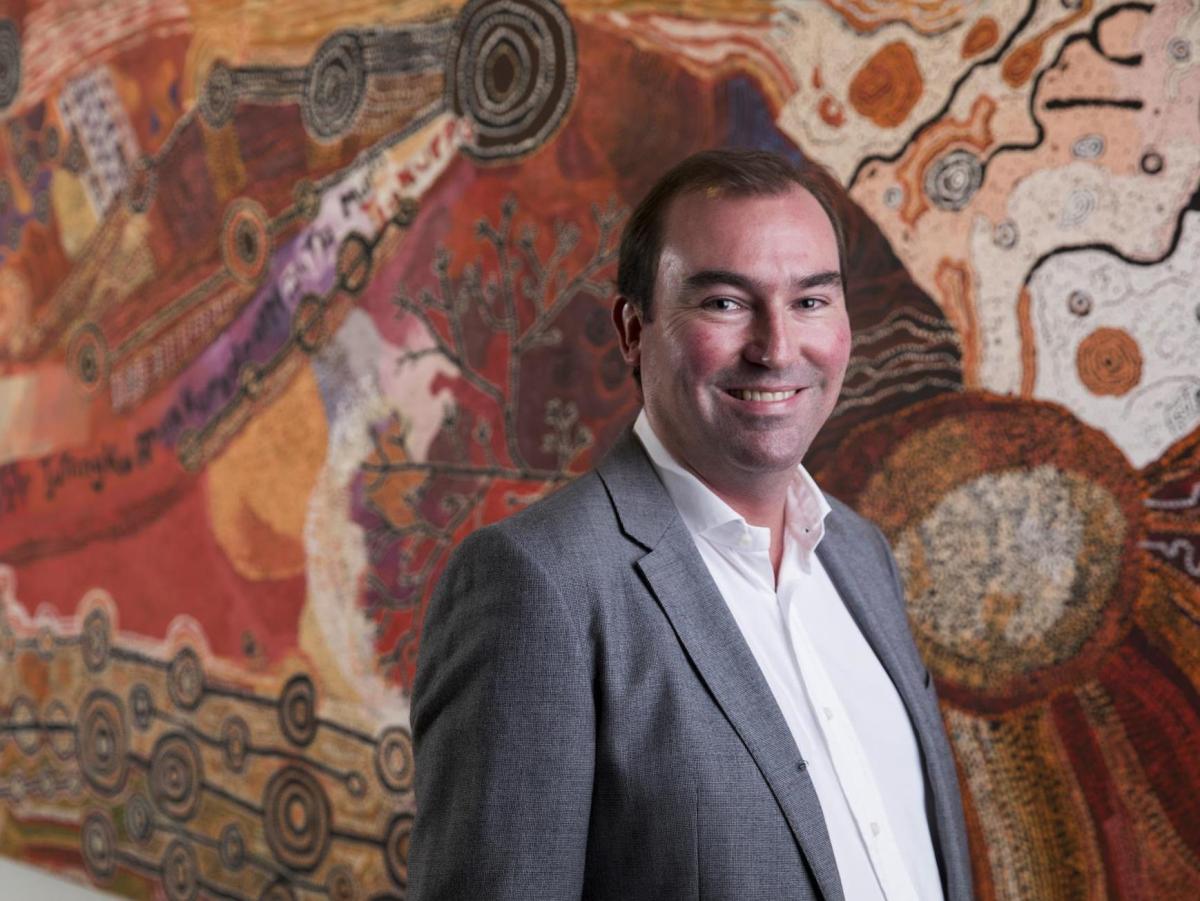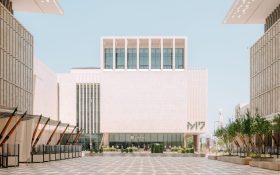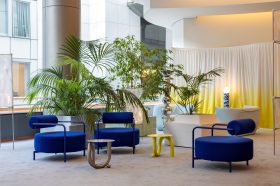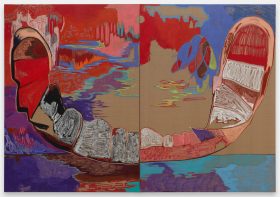Ryan Johnston take up the helm of Buxton Contemporary; Image courtesy University of Melbourne
It sounds like the right recipe for success: a new contemporary gallery that has grown out of the success of a private collection gifted together with an endowment for its future; it’s embedded within an art school to foster a new generation of artists, and it’s located within the heart of Melbourne’s cultural precinct – its door encouragingly open to passers by.
We are talking about Buxton Contemporary, Melbourne’s newest art gallery due to open on 9 March. ArtsHub spoke with newly appointed Director Ryan Johnston.
‘It is a game changer – a once in a lifetime opportunity – and the legacy it will provide the University of Melbourne will stretch a long time into future. It is not just important for this next generation of artists, but for many to come,’ he told ArtsHub.
The purpose-built space will house the collection of Melbourne property developer Michael Buxton and his wife Janet, and has been embedded at the University of Melbourne’s Victorian College of the Arts (VCA), while still maintaining street access.
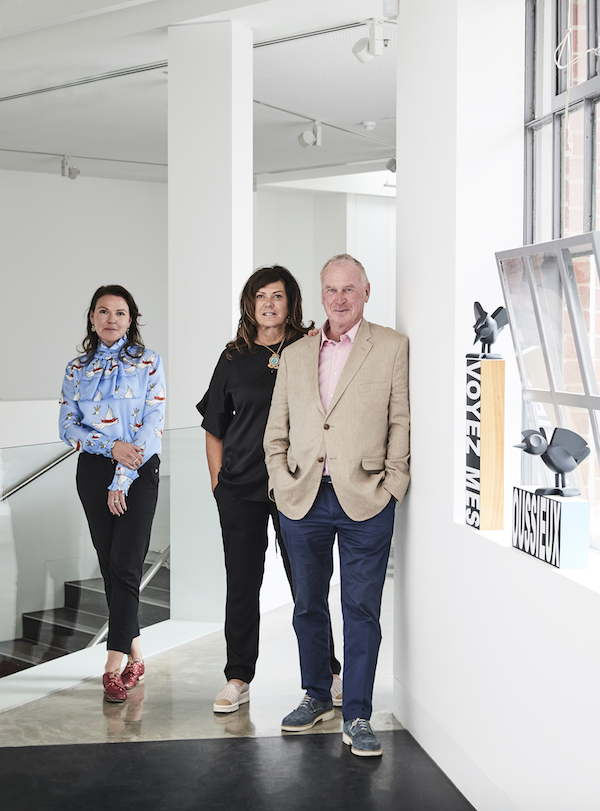
Luisa Bosci, Director of the Michael Buxton Collection, with Janet and Michael Buxton. Photo by James Geer.
‘I see this (art) museum as a kind of gateway between the University and broader community and cultural precinct (of South Melbourne),’ said Johnston.
Buxton donated his collection to the University in 2014, as well as the funds to build the new gallery, an endowment and further operational support for a 20-year period, totalling over $26 million.
‘It is an unusually far-sighted philanthropic vision. What I know of Michael, is that he likes to get the job done right – to ensure its viability is embedded within the University of Melbourne and Australia, more broadly, to maximise the value of it,’ he explained.
What does Buxton Contemporary offer?
Designed by leading Australian architects Fender Katsalidis, the gallery will feature five galleries and a designated teaching space. Johnston described it as ‘a bit of a tardis’ that opens up and out as visitors move through its heritage gates overshadowed by a huge video screen, to find various spaces revealed.
‘It comes without the weight of history, and it gives us the opportunity to rethink how we use this collection and jump forward in exciting ways,’ Johnston said. ‘Buxton Contemporary will provide a dynamic forum through which the University will engage local, national and international communities with the art, culture and issues of today.’

Buxton Contemporary, The University of Melbourne, Southbank. Video still: Kate Mitchell, In Time, 2015. James Geer Photography
In terms of highlights from the Collection, Johnston says his answer changes on an hourly basis as different artworks are taken out of their crates. ‘It is like choosing between children.’
After just a week in the job, Johnston is still like a kid in a candy store laying his hands on some of Australia’s best art for the first time.
‘The vision for the collection was always of museum quality. And while Buxton loaned to other institutions, this is the first time they will be seen together,’ he explained.
The inaugural exhibition, The shape of things to come, had been curated by Melissa Keys and features more than 25 artists’ works that explore ideas around the role and agency of the artist in culture, society and politics – as visionary, storyteller, dissenter and alchemist.
Artists include: Hany Armanious, Benjamin Armstrong, Peter Booth, Daniel Boyd, Pat Brassington, Nadine Christensen, Juan Davila, Destiny Deacon & Virginia Fraser, Mikala Dwyer, Emily Floyd, Marco Fusinato, Tony Garifalakis, Shaun Gladwell, Diena Georgetti, Jess Johnson, Helen Johnson, Nicholas Mangan, James Morrison, David Noonan, Mike Parr, Patricia Piccinini, David Rosetzky, Ricky Swallow, Peter Tyndall, Francis Upritchard.
The Gallery is working on a four month turnaround of exhibitions, to allow sustained engagement in the work and dedicated public programming around the exhibitions.
Johnston added that this timeframe will also warrant the opportunity for people to look at an exhibition on multiple occasions.
‘It is really the key to building any institution – old or new – the spirit with which it was founded. That is where you find the narrative. For Buxton, the spirit lies in that it is focused on artists in depth – their oeuvres and practice traced over time.’
Johnston added that while it was a private collection it has been purchased exclusively through the primary markets so that artist would benefit from its acquisitions.
‘The other important origin point in this story is the fact that it was gifted to an educational institution and not an art gallery. Having come from a large public institution, which is seen through the lens of collection, here culture is also seen through historians, mathematicians, through law, ethics, science – so many perspectives that bring to bear on the cultural object. University galleries provide a point of translation.’
Johnston added that Buxton Contemporary’s programming will not be limited to the collection.
Who is its new Director?
Johnston comes to the position with more than 15 years’ experience as a director, curator and University of Melbourne lecturer. Past appointments include Head of Art at the Australian War Memorial and Acting Director of the Shepparton Art Museum, where he oversaw a redevelopment of the museum and its subsequent relaunch.
He has additionally sat on the boards of Canberra Contemporary Art Space and was Chair of Canberra Youth Theatre.
University of Melbourne Pro-Vice Chancellor Engagement Professor Su Baker said: ‘Having a gallery like Buxton Contemporary offers unprecedented potential for our students and the wider community. Ryan’s knowledge and experience within the tertiary sector and public institutions is invaluable.’
Buxton Contemporary is located at the corner Dodds St and Southbank Boulevard, Southbank. Opening hours: Wednesday to Sunday 11am to 5pm, Thursdays until 8pm.
The shape of things to come is showing from 9 March – 24 June.
